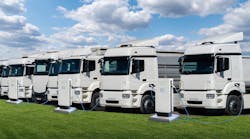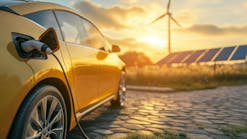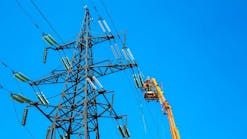Clean Transport Study Forecasts Long-Haul Journey for Electrifying Truck Fleets
Fleet electrification and/or other decarbonization in U.S. long-haul trucking is almost assuredly coming, but will do so gradually—and heavy-duty charging infrastructure does not need to be built all once.
Now, for sure, is when the journey must begin.
These seemingly contrary, yet long-term complementary, set of purposes are part of a new report put out Thursday by advocacy group International Council on Clean Transportation (ICCT). The study assesses where, when and how much charging infrastructure is going to be required in converting heavy-duty trucking fleets from diesel and gas to electrification and other zero-emission technologies such as hydrogen fuel cells.
“With charging infrastructure in the right places at the right time, zero-emission trucks will deliver cleaner air and save money in the long run,” Ray Minjares, Director of the ICCT Heavy-Duty Vehicles Program, said as quoted in the executive summary of the report (linked here). “Now is the time for electric utilities to step up and deliver the power freight trucks need.”
Two-thirds of greenhouse gas emissions from medium- and heavy-duty vehicles derive from tractor-trailers, the ICCT said. Battery electric powertrains are the most affordable path for decarbonizing long-haul truckers, the group estimated, noting that current BEV powertrains already achieve 13 miles per gallon of diesel equivalent compared to 7 MPG for diesel engines.
Some 1.1 million zero-emission trucks and buses will be on the roads by 2030, exponentially more than are currently, if the ICCT forecast proves correct. The vehicle manufacturing market is certainly widening its offerings: There are now more than 100 zero-emissions truck or bus models (battery electric vehicles or fuel cell electric vehicles) available on the market, from makers such as Kenworth, Blue Bird, Nikola, Hino, Volvo, Hyundai, Tesla and other startups.
By 2030, still, most of those electrics, including some of 130,000 combination tractor-trailers with BEV or FCEV, will be refueled by slow, overnight charging stations at 50-150 kW or ultra-fast charging stations of 1 MW or more, the ICCT says. (A key issue with the latter is how the macro utility grid will be adapted and expanded, or microgrids developed at various ultra-fast charging sites).
Organically is how that will happen at first, the ICCT reassures. The main growth will initially focus in freight zones such as ports, industrial clusters and freight corridors.
California and Texas will lead a group of 10 states handling 49 percent of national charging needs, according to the ICCT. The electric truck concentrations should be strongest in certain regions of southern California, Texas, Phoenix, Salt Lake City and Chicago.
These concentrations will help target and maximize investments in both vehicles and infrastructure, according to the report.
Utilities must get engaged now, the ICCT encouraged. Those comments echo the points made by Dave Schaller of the North American Council for Freight Efficiency at last year’s T&D World Conference in Charlotte.
Earlier this year, the NACFE released a new report noting that waiting is not an option for decarbonizing the commercial trucking fleets.
"The model is clearly changing for fleets—from get it there on time at the lowest cost to get it there on time at lowest cost but in an environmentally friendly way," Jeff Seger, lead author on the more recent NACFE report, said in March. "That's the whole challenge we are trying to address."
NACFE is working with Endeavor’s own T&D World and Fleet Owner magazines to create a special series of sessions on fleet electrification happening on the first day of events at T&D World Live, which is Sept. 12-14 at SAFE Credit Union Convention Center in Sacramento, CA.
This one-day “mini-event,” called the Commercial Electric Vehicle Infrastructure Conference (CEVIC) will occur on Monday, Sept. 12 and will include NACFE’s Executive Director Mike Roeth and other speakers from International Council on Clean Transportation, some of the biggest fleet companies and commercial transporters in North America, electric utilities and regulatory agencies.


